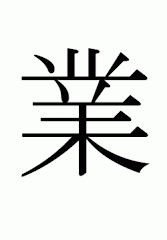 While teaching I've been following Prof. Seung-Hee Yang's Contact Improvisation Class at the Korean National University of Arts (KNUA) for a while now.
While teaching I've been following Prof. Seung-Hee Yang's Contact Improvisation Class at the Korean National University of Arts (KNUA) for a while now.(For those who do not know: it was from his suggestion that I got invited to teach here)
His class is very interesting for me: he adapted this kind of dance to traditional Asian teaching methods and movements. We follow a set sequence of specified movement tasks, mainly in pairs, echoing traditional East-Asian partnering stretches, but here they are tasks for warming up our bodies and minds and establishing contact with each other. From these stretching exercises we continue to different kinds of taking weight and lifting each other, following an inherent logic. Finally we end with more open forms of improvisation, at times changing partners.
This class is repeated over a long period of weeks (compare to the traditional method of teaching Tai Chi Chuan) Judging from the frequency with which I see these movements re-appear in dance pieces here in Seoul, it obviously impresses the students, not just at KNUA but across the universities where he is teaching, just like I think it should... ;-)
As the months progressed Seung-hee started to change this form to match the higher level of experience of the students and he began to introduce more layers, such as being in touch by sensitive energy and emotions, rather than direct skin touch or acrobatics.
Last week he did something extraordinary:
from a warm-up of contact with each other back-to-back, he guided us into ever greater amounts of contact-space that we create between us. Eventually we were on our own with the studio and each other.
The results were phenomenal.
Everybody including myself moved with extraordinary ease and connectedness / alignment. All the movements really made sense.
It was the solution to a problem I see in dance very often: the logic of the moving body is too often broken down by dysfunctional mental forms and anatomically incorrect or superficial patterns.
Here, with Seung-Hee Yang, body-movement and space became one. Form and movement and body came to match each other extremely closely from the very first beginning.
It was clear that we needed the longer part of careful preparations by repeating the same sometimes rather advanced movement patters, to build up enough internalised knowledge for this revelation.
In my own work "available tension / sensitive energy" I have been looking for a similar physical state for years.
I am very happy to have experienced it here with Seung-Hee.
감사 합니다 (Kamsa hamnida) !! ^^


4 comments:
Hey,
your description Mr Yang's work sounded very interesting.
Is he regularly teaching in Knua?
my name is hanna Decker I am half Korean half german and study in finland contemporay dance.
I would like to do an exchange with a school in Korea.
It would be great if you could give me some informations.
고맙습니다
hanna ^^
I am so happy to see how well the students are doing with Contact Improvisation. Seung Hee's work must be very exciting. The description of Mr. Yang's work is very advanced and shows much knowledge of the essential concerns of Contact Improvisation. Continue to GROW!
Is it still on ? Where can I get details about contact impro activities in Seoul ?
Bollywood dances have gone through several modes and influences. This also relates to the type of films and changes that is influenced by the new age directors. There is more to the nuances and groove in the dance style as it is reflective about refreshing steps and ideas.
Ecstatic Café
Post a Comment